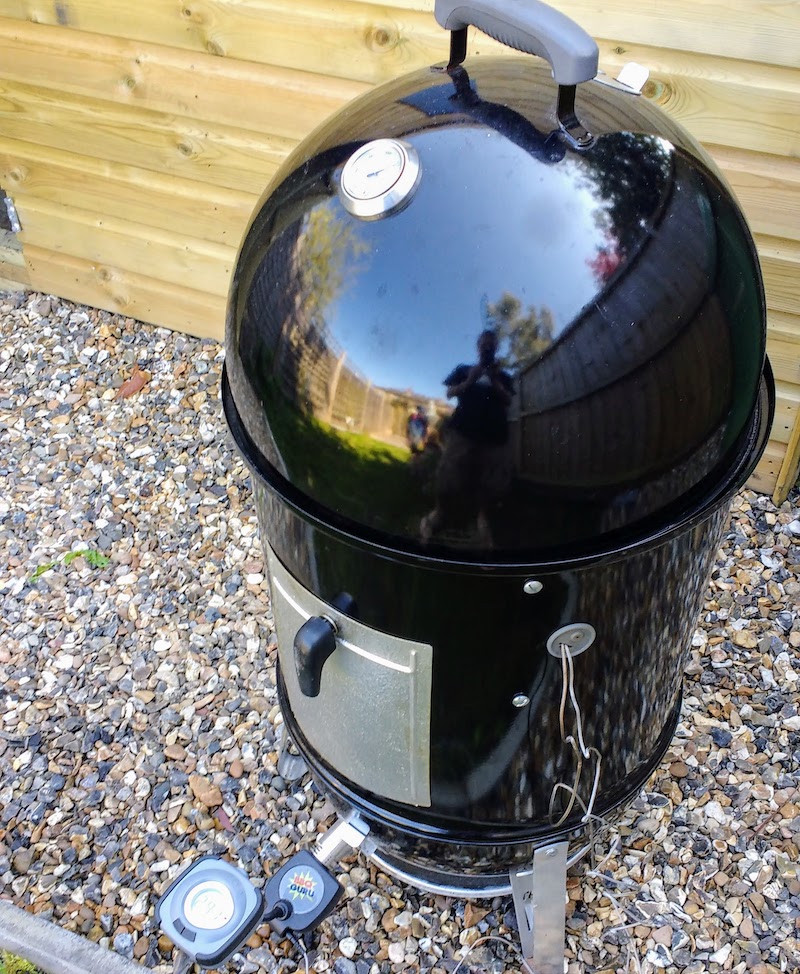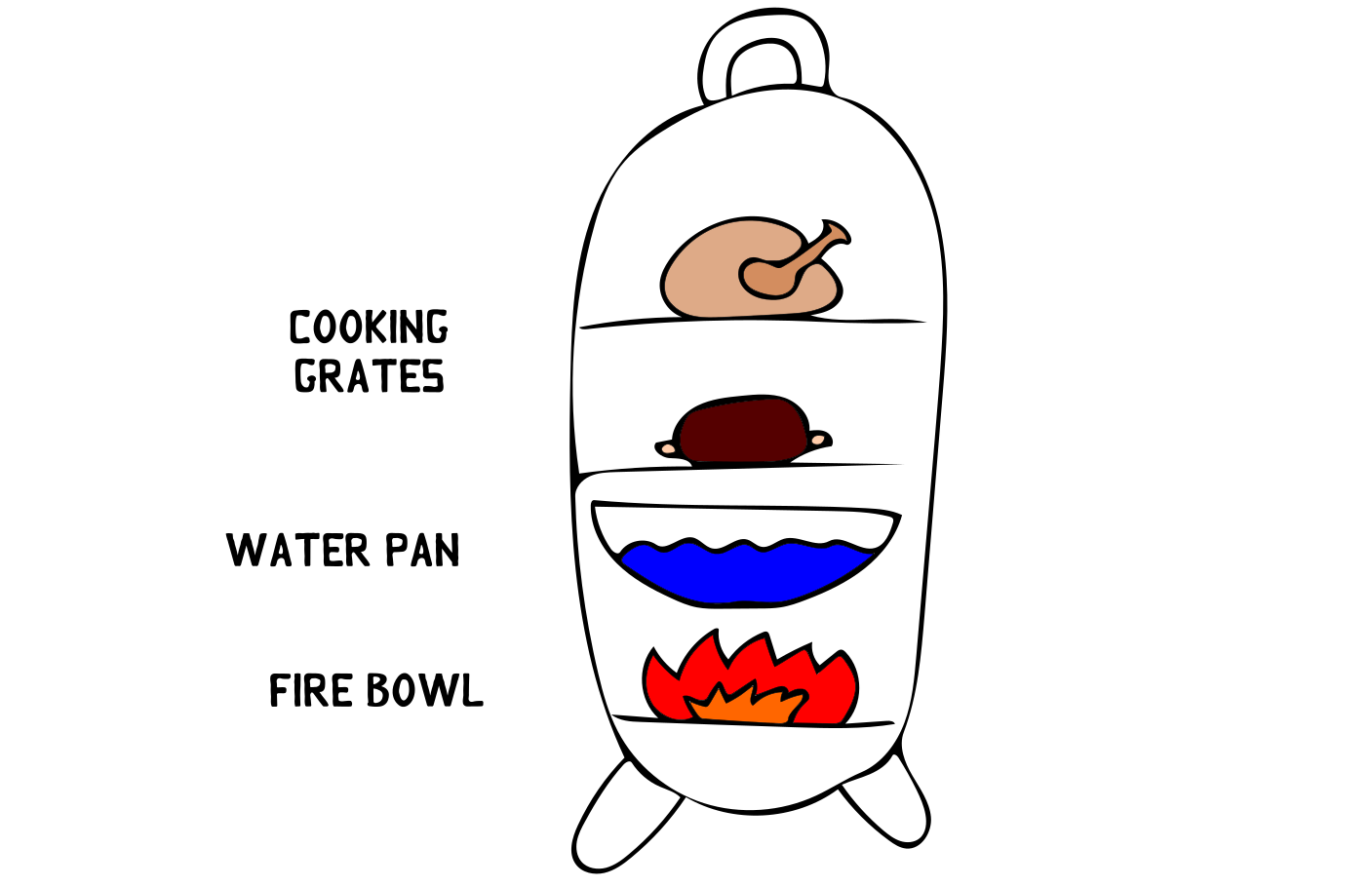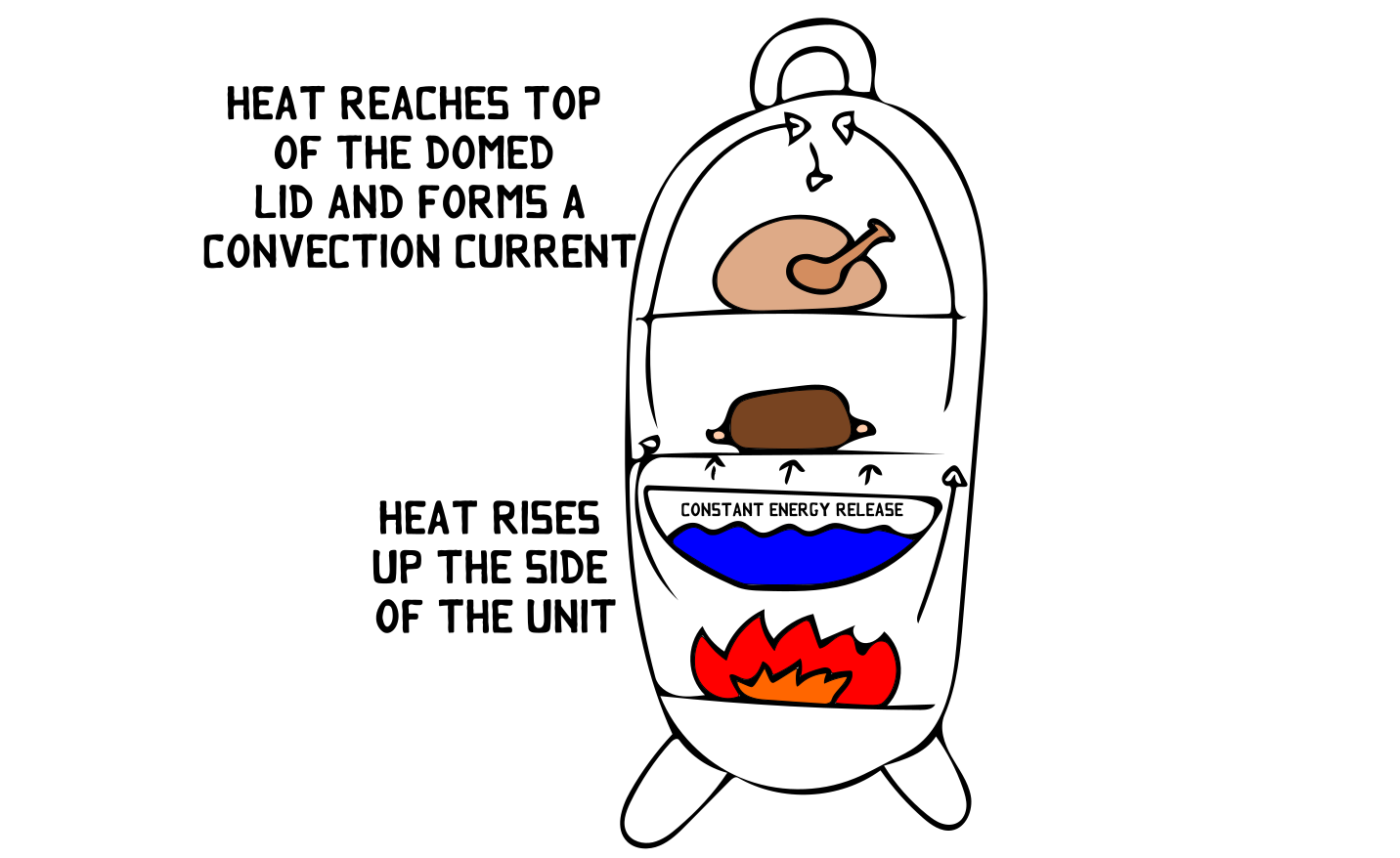How-to BBQ: Ultimate Weber Smokey Mountain guide

This article is an overall, how-to guide for the Weber Smokey Mountain (often referred to as a WSM). We will look at the science of how they work, as well as basic controls, cooking techniques and then finish with a look at potential modifications (mods).
This article also applies equally to any well built bullet smoker, they broadly all have the same design and feature set, so if you are considering other bullet smokers (ProQ is a good alternative) then this all still applies equally.
1. What is a Weber Smokey Mountain?
A WSM is a bullet smoker (named because of the shape broadly resembling a bullet), it has been a core part of Weber’s offerings for many years and hasn’t really been changed much since first launch. It’s longevity probably gives you a clue about its quality - bullet smokers don’d need to be complicated (in fact they shouldn’t be), it’s a straight forward piece of kit which has let Weber shine with it’s build quality.
The WSM is designed for long, low-and-slow cooking and smoking - if you want a BBQ to cook directly over hot coals, or to get up to higher temperatures that you might reach in an indoor oven or pizza oven then the WSM probably isn’t the best fit. It can do lots of other things, but not as easily and some will take some modifications and others are just less convenient! However, if you are looking for a piece of kit that will let you smoke a brisket, a couple rack of ribs or pulled pork, for example, then the WSM could be a great match.
2. How does the Weber Smokey Mountain work?
The WSM is split into a couple of components:

-
The fire bowl - the very base of the bullet, closest to the ground is where the coals are located and the source of the heat
-
Above that there is a water pan - this is a large round bowl that sits almost the width of the entire smoker, that as the name suggests, you can put water into (there are other options here, which we will discuss in the modifications section)
-
Directly above the water pan is the cooking area, by default there are two circular grills that you can cook meat on
-
Domed lid - as you can see from the pictures, this is a large domed lid that sits on top of the smoker giving it the characteristic bullet shape.
-
The final important factor of the smoker is the air vents - these are used to control the smoker temperature. At the base of the unit, around the fire bowl there are three daisy-wheel air vents (each with three holes), then on the top of the domed lid behind the handle there is another single daisy-wheel air vent (also with three holes).
3. How to control temperatures on the Weber Smokey Mountain
All of the components above are essential parts of cooking on the WSM, and honestly, once you get used to it you will be amazed at how effective such a simple design and set of components can maintain a temperature within a couple of degrees for hours on end!
First of all, the WSM cooks entirely by convection, that is there is no cooking from radiant heat from the coals as the water pan acts as a deflector for all that radiant heat. The burning coal at the bottom of the unit heats the air, that is forced to travel up around the sides of the smoker and up to the top of the domed lid, before sinking back down the middle of the cooking area, forming a large convection current throughout the smoker.

So the smoker is one large convection cooker, and to adjust the temperature we just increase or decrease the heat source, which in this case is the burning coals. The hotter the coals, the hotter the smoker temperature.
The temperature is adjusted simply by adjusting the air vents at the base of the unit, the more air flow in the hotter the coals will burn (if you remember from high school, fire needs fuel and oxygen to survive - it has plenty of fuel in the coal, so if we provide more oxygen it will grow, and if we suffocate it of oxygen it will reduce). When you first start cooking on the WSM it will take a bit of practice in how much to adjust the daisy-wheel air vents at the base of the unit to control the airflow, but once you got it dialled in it will happily sit there maintaining temperature for hours.
4. The Weber Smokey Mountain water pan
We mentioned that in the convection setup the water pan acts as a deflector, absorbing the radiant heat direct from the coals - the presence of a deflector is important as otherwise that radiant heat would be coming straight into our cooking area and cooking our food from below and we’d end up with burnt bottoms on our meat.
However, the water pan also has another important function and that is temperature regulation. The water pan acts as what is called a heat sink - water can hold and retain quite a lot of heat energy, so it acts a bit like a battery, absorbing lots of heat energy from the fire and then slowly releasing that heat out again and a steady rate. Given the boiling temperature of water at 100 degrees centigrade, the water pan gives us a large heat source that is guaranteed to be a steady 100 degrees (normally low and slow cooks would start around 110 degrees), so this is the ideal heat sink for the smoker. If you want to cook low-and-slow, using a water pan like this makes it a lot easy to maintain a steady temperature.
Obviously with the addition of a water source in the smoker, it will increase humidity in the unit during cooking (which can be a good or a bad thing, depending on what you are cooking), but over my years cooking I have never found a noticeable difference with or without water to the humidity.
5. Weber Smokey Mountain: Pros & Cons
As mentioned already, a bullet smoker is a great bit of kit that can reliably give you great results cooking, and Weber’s build quality makes for a durable smoker that can last years. As with any piece of kit, there are things that it will excel at, and things it won’t do so well.
Advantages of the Weber Smokey Mountain
Cost
Bullet smokers are relatively affordable (compared to maybe pellet grills or ceramic kamado bbqs). The WSM can still set you back £400 which is a lot for a BBQ, but they are often available second hand in good condition.
Smoking
Bullet smokers are great for smoking food, that’s their biggest strength and what they do well. Low and slow cooking steadily and imparting great smokey tastes. Only really a proper wood burning offset BBQ will out perform a bullet smoker in this area, most other types won’t smoke food the same.
Simplicity
Easy to move, put together and operate. They can be transported pretty easily if you need to and easy to clean.
Community & mods
They have been around a long time, there is a wealth of mods available that can improve the performance and flexibility of the wsm.
Disadvantages of the Weber Smokey Mountain
Flexibility
Whilst they excel at low-and-slow smoking, they don’t off the all round flexibility of some other devices. Hot and fast is harder without modifications (you can remove the middle section with water pan and just put a grill right on top of the coals, but its not the most convenient).
Fuel efficiency
They are not very fuel efficient - the body is a single piece of porcelain enamel coated metal, so offers no real insulation. This means to keep warm it needs to compensate for all the heat loss, it needs to keep the coals burning pretty hot, which in turn means it gets through a reasonable amount of coal in longer cooks.
It is this inefficiency though, that lets it excel in smoking meat - to keep it running hot it maintains a reasonable air-flow through out the smoker and as the coals are burning hot (not just slowly smouldering) it burns wood more effectively. Both these factors provide better smoking for the meat.
6. Modifications
There are lots of mods available for the WSM, some of them more drastically change the functioning of the WSM, some are just performance tweaks. For now we will just go through the more essential mods:
Digital grate thermometer probe
As with most smokers and BBQs, arguably the most important modification is a digital temperature probe for accurate temperature monitoring at grate level (where the food is). The in lid thermometer in the WSM is well known for needing calibrating and can be as much as 30 degrees difference from top of the dome and grate level. Factors such as external heat (a sunny day), makes quite a difference. The good thing about digital temperature probes is that they are portable, so you can use them across all your BBQs (or oven) and usually also have internal meat probe options which are also essential.
Thermopen, Inkbird and Meater all provide popular digital temperature probe options at a range of prices and functionality.
Gasket tape
Because the entire WSM is just metal, the contact points all have the tendency to leak (primarily around the door of the middle section and where the lid sits on the middle section).
Gasket tape is cheap and easy to apply, and reduces leaks and makes the unit far more efficient.
Door
The WSM door is a fairly flimsy piece of metal that isn’t always shaped perfectly to line up with the middle section. There are a variety of options to replace the door, but the Cajun bandit, brushed steel door is a good, heavy duty option, that when combined with gasket tape provides a really well sealed unit.
